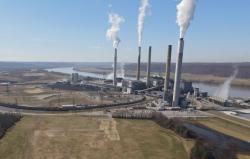
OR WAIT null SECS
© 2024 MJH Life Sciences™ and Turbomachinery Magazine. All rights reserved.
The logical choice for power generation
During the last year, two major events occurred that will contribute to increased demand for gas turbines for power generation. The Fukushima nuclear reactor incident will most likely result in a worldwide decrease in new nuclear power plant construction, and resulting increase in combined cycle construction. Germany relied on nuclear power for 23 percent of its electricity, but shut down eight of its plants last March, and announced plans to phase out all civil nuclear power plants by 2020.
The second event was the announcement by four major OEMs – Alstom, General Electric, Mitsubishi and Siemens - that they have broken the 60 percent efficiency barrier, making combined cycle plants even more desirable. Manufacturers are gearing up to meet the increasing number of orders for gas turbines, with the current trend towards natural gas as the fuel of choice. Alstom has announced the launch of its upgraded GT24 gas turbine and the corresponding KA24 combined cycle power plant offering for the 60Hz market, to be manufactured in Chattanooga, Tennessee. GE posted one billion dollars in North American annual sales of aeroderivative and heavy duty gas turbines by third quarter 2011. In addition, the recent addition of the 50 MW LM6000-PH FlexAero machine to GE's offerings underscores the need in arid locations for dry, low NOx machines.
Fuel prices account for nearly 70 percent of an operating power plant's budget, thus seemingly incremental increases in plant efficiency can amount to serious savings over the life cycle of a power plant. Since less fuel is required to maintain the same power output profile, savings add up. As an example, a two percent increase in efficiency on a baseloaded 500 MW plant would yield a reduction in fuel gas purchases of nearly a quarter million dollars per year. This also underscores the need for continuous monitoring of plant performance and heat rate, as degradation from fouled heat exchangers or dirty blades can quickly decrease your margins.
Factors that drive the demand for gas turbines will be explored in more detail to follow, but a quick review shows that some of the drivers of GT demand are multiple fuel capabilities, including renewable and synthesis fuels; short construction lead time and modular construction; low power generation operational cost; low installed cost; reducing emissions; and very high efficiency.
A detailed review of the factors that drive the effectiveness of gas turbines as standards of the industry will help explain why they remain the logical choice for a majority of new power plant projects, and will continue to do so for many years to come. One of the benefits of gas turbine machines is their comparable ease of installation and adaptability. Hospitals and colleges are good applications for 200- kilowatt units; small towns can be powered by 200-megawatt units. Heat recovery units add the ability to co-generate with industry and provide steam for power or processes, or even supply a municipality with combined heat and power (CHP). This also highlights the fact that in combined cycle and CHP applications, efficiencies up to 60 percent are now realized.
(More in Turbomachinery Handbook 2012)



